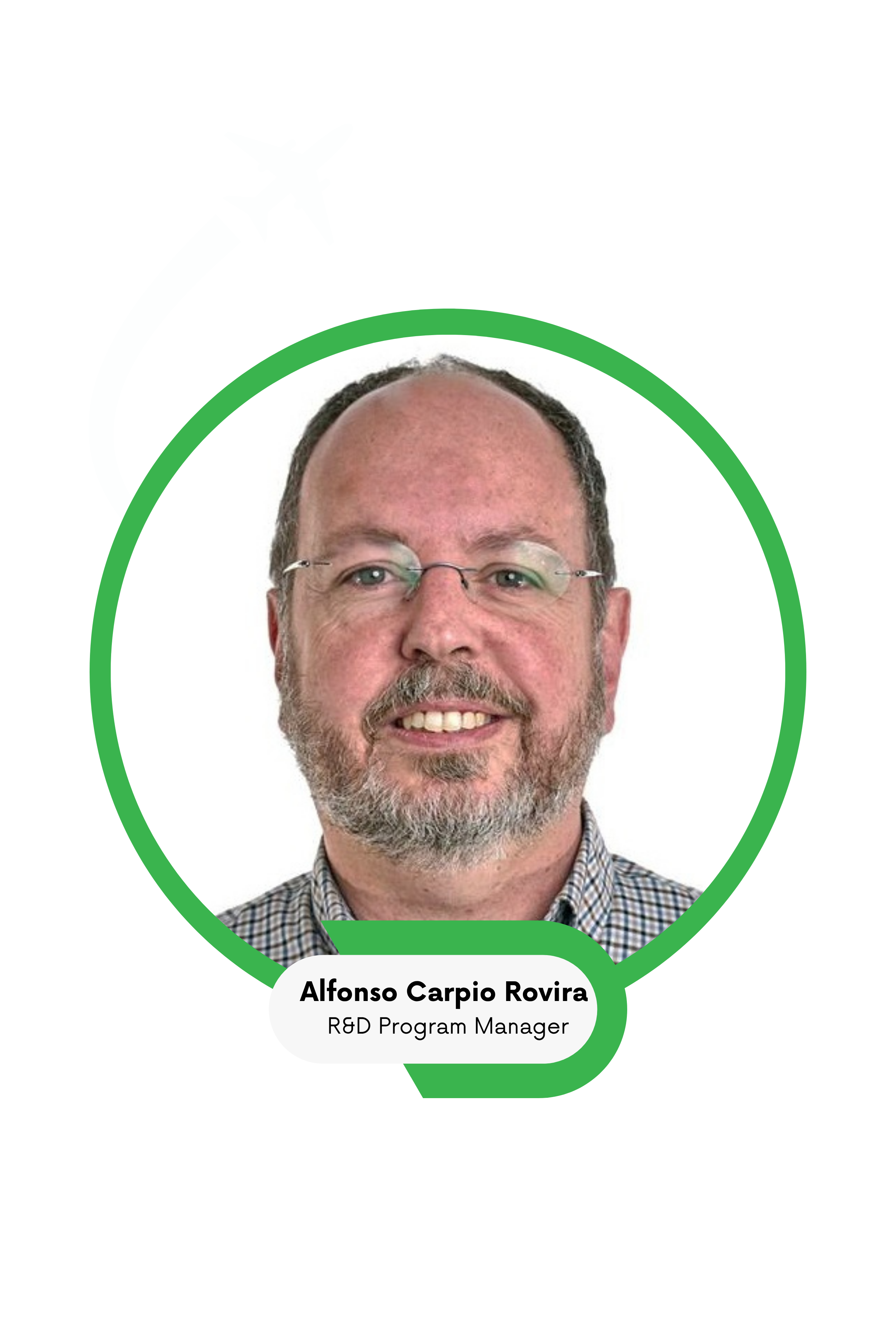Personal Information
- Name: Alfonso Carpio Rovira
- Position/Title: Global R&D Program Manager
- Department: Materials & Structure laboratories
Professional Background
Briefly describe your professional background and area of expertise:
I hold a degree in Theoretical Physics from the University of Barcelona. I have been working in industry for 25 years, initially in metrology and calibration for the automotive sector across different companies. For the past 20 years, I have been with Applus Laboratories in the Mechanical Testing Laboratory, starting as a structural test engineer and now serving as the R&D Manager.
What inspired you to pursue a career in this related field, e.g., aviation, carbon-free emissions etc?
My interest in testing began early when I learned about Applus Laboratories while choosing my university career path. After speaking with various professionals there, from engineers to chemists, I was convinced that a physics degree, which I was passionate about, could be applied to industry in the calibration and testing sectors. While studying theoretical physics, I selected more applied specialties as electives (instrumentation, electronics, condensed matter physics). I had also been interested in aeronautical engineering since childhood, and although there wasn't an aeronautical engineering school in Barcelona at that time, I eventually found my way into the aeronautical sector.
“While studying theoretical physics, I selected more applied specialties as electives... I had also been interested in aeronautical engineering since childhood... I eventually found my way into the aeronautical sector.”
Role in H2ELIOS
What is your role in the H2ELIOS project?
I am the Project Coordinator for Applus and the focal point for mechanical testing. We are primarily involved in Work Package 5 (WP5).
Can you describe your main responsibilities and tasks?
At Applus Laboratories, we are responsible for conducting both materials testing at low temperatures and functional testing of the definitive tank. I coordinate these activities and serve as the main contact for mechanical testing requirements.
How does your work contribute to the overall goals of the H2ELIOS project?
Our primary goal is to provide data on the characterization of materials at low temperatures to support design and simulation efforts, and then validate the functionality of the hydrogen tank under realistic ground conditions (filled with liquid hydrogen). This contributes to the development of safe and effective hydrogen storage solutions for aviation.
Project Insights
What do you find most exciting about working on the H2ELIOS project?
The H2ELIOS project is extremely exciting because it allows us to gain experience in validating cryogenic structures and in the handling of liquid hydrogen (LH2). The project is particularly exciting due to its challenging objectives and the innovative solution proposed by the consortium.
What has been the most challenging aspect of your work on this project?
The most challenging aspect of the project so far has been securing sufficient quantities of liquid hydrogen (LH2) and defining test conditions and requirements to ensure safety during functional testing, particularly due to the large quantities of LH2 that must be handled.
Can you share a significant milestone or achievement your team has reached so far?
One of the most important milestones we've achieved has been validating a method for testing materials at cryogenic temperatures by immersing specimens in liquid nitrogen (LN2). This method is in the patent process and enables cryogenic testing through a much more economical and simpler process than standard cryostats typically used for these tests.
“One of the most important milestones we've achieved has been validating a method for testing materials at cryogenic temperatures by immersing specimens in liquid nitrogen (LN2). This method is in the patent process and enables cryogenic testing through a much more economical and simpler process than standard cryostats.”
Personal Experience
What have you learned during your time working on H2ELIOS?
We have learned a tremendous amount about cryogenics and how to handle liquid hydrogen (LH2).
How has this project influenced your professional development?:
This project has given me the opportunity to develop professionally in the field of cryogenic testing and in the use of liquid hydrogen.
Fun Facts
What do you enjoy doing in your free time?
In my free time, I greatly enjoy physics (understanding new theories from an advanced but accessible perspective) and analog photography (traditional film photography).
Share a fun fact about yourself that your colleagues might not know:
I have very diverse cultural influences. My grandmother was born in Argentina to Catalan parents (immigrants), my father is from southern Spain while my mother is Catalan, my wife is French, and my sister-in-law is German. As Uruguayan singer Jorge Drexler says: "I am not from here, but neither are you. Not completely from anywhere, and a little bit from everywhere."
“The H2ELIOS project is one of the most challenging projects I've worked on in my career, but at the same time, it's one where I enjoy the technical aspects the most.”
Closing Thoughts
Is there anything else you would like to share about your experience with the H2ELIOS project?:
I believe the H2ELIOS project is one of the most challenging projects I've worked on in my career, but at the same time, it's one where I enjoy the technical aspects the most.
